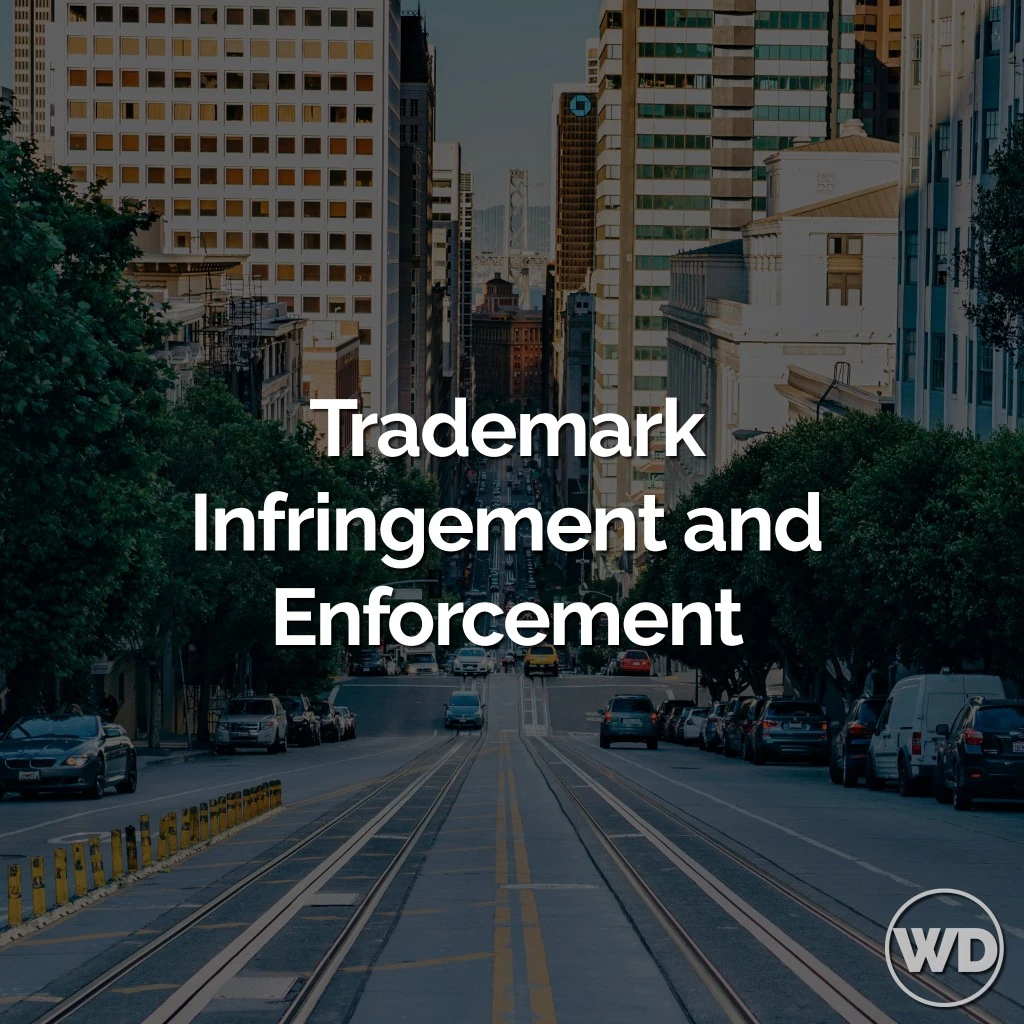In this article:
– How to identify trademark infringement.
– What to do if your trademark is infringed.
– Legal remedies for trademark infringement cases.
S01-E020
Trademark Infringement and Enforcement for Non Lawyers
Listen to this article as a fast 18-minute podcast.
Trademark Infringement and Enforcement: Identifying, Addressing, and Resolving Trademark Infringement
Trademark infringement is a serious issue that can damage a business’s brand, reputation, and bottom line. When a competitor or unauthorized entity uses a mark that is identical or confusingly similar to a registered trademark, it can lead to consumer confusion, dilute the value of the original brand, and ultimately harm the trademark owner. Understanding how to identify infringement, take action when it occurs, and pursue legal remedies is essential for protecting your intellectual property. This section will discuss the key steps to identifying trademark infringement, what actions to take if your trademark is infringed, and the legal options available for resolving such cases.
How to Identify Trademark Infringement
Trademark infringement occurs when someone uses a mark that is identical or confusingly similar to a registered trademark without permission, and this use causes confusion among consumers. The purpose of trademark law is to protect consumers from being misled and to ensure that businesses can maintain control over their brand identity. To identify whether trademark infringement has occurred, certain factors are considered:
1. Similarity of the Marks:
One of the first steps in identifying infringement is evaluating how similar the allegedly infringing mark is to the registered trademark. This includes analyzing the visual appearance, sound, and overall impression of the two marks. Even if the marks are not identical, they may still be infringing if they are so similar that they could confuse consumers into thinking the products or services come from the same source.
For example, if a new company starts selling shoes under the brand “Mike” with a swoosh-like logo, it would likely be considered infringing on Nike’s registered trademarks, even though the names are not exactly the same.
2. Relatedness of the Goods or Services:
Trademark protection applies to specific categories of goods or services. To determine infringement, it’s important to evaluate whether the goods or services offered by the alleged infringer are related to those of the trademark owner. If both companies operate in the same industry or offer similar products, the likelihood of confusion increases.
For instance, if a business registered the trademark “EcoTech” for its line of eco-friendly cleaning products, and another company started using the same name for environmentally-friendly kitchen appliances, this could cause confusion since both brands operate within the eco-product industry.
3. Likelihood of Consumer Confusion:
The key factor in identifying infringement is the likelihood of consumer confusion. Would a typical consumer believe that the goods or services come from the same company? If the answer is yes, then infringement has likely occurred. Courts often look at factors such as the similarity of the marks, the strength of the original trademark, the proximity of the goods or services, and evidence of actual confusion in the marketplace.
4. Geographic Overlap:
Trademark infringement is more likely to occur if the two businesses operate in the same geographic area. For example, if two businesses in the same city use very similar trademarks in a related field, the potential for confusion is high. However, if the businesses operate in completely different regions or markets, there may be less likelihood of infringement.
5. Dilution of the Trademark:
Even if consumer confusion isn’t present, trademark infringement can still occur through dilution. Dilution happens when the use of a similar mark diminishes the strength or distinctiveness of a famous trademark. Well-known brands like Coca-Cola or McDonald’s can claim dilution even if there’s no confusion, simply because the unauthorized use of their marks weakens the distinctiveness of their brand.
What to Do if Your Trademark is Infringed
If you believe your trademark is being infringed, it’s essential to take immediate action to protect your brand. Here are the steps you should follow:
1. Document the Infringement:
The first step is to gather evidence of the infringement. This may include screenshots, advertisements, or product listings that show the unauthorized use of your trademark. Make note of when and where the infringement occurred, and if possible, try to obtain proof of consumer confusion, such as customer complaints or misdirected inquiries.
2. Send a Cease-and-Desist Letter:
In many cases, a trademark owner’s first response to infringement is to send a cease-and-desist letter. This is a formal letter that notifies the infringing party of your trademark rights and demands that they stop using your mark. The letter typically includes:
– A description of your registered trademark and its protection.
– Evidence of the infringing use.
– A request for the infringer to immediately cease use of the mark.
– A warning of potential legal action if the infringing activity continues.
A cease-and-desist letter can often resolve the issue without the need for litigation. Many infringers are unaware they are violating trademark law and will voluntarily comply once they are informed of the infringement.
3. Negotiate a Settlement:
If the infringer responds to the cease-and-desist letter but disputes the claim or continues to use the mark, it may be possible to negotiate a settlement. Settlement agreements might include terms such as payment for damages, an agreement to stop using the mark, or a licensing arrangement where the infringer agrees to pay for the right to use the mark under specific conditions.
4. File a Lawsuit for Trademark Infringement:
If the infringer refuses to comply with your cease-and-desist letter or settlement offers, you may need to pursue legal action. Filing a lawsuit for trademark infringement in federal court allows you to seek legal remedies, which may include an injunction to stop the infringer from using the mark and financial compensation for damages.
5. Monitor and Enforce Your Trademark:
Even after resolving a case of infringement, it’s important to regularly monitor the marketplace for future instances of unauthorized use. This can be done through trademark monitoring services, which alert you to new filings or uses of similar marks. Active enforcement of your trademark rights is key to maintaining the strength and exclusivity of your brand.
Legal Remedies for Trademark Infringement Cases
If you take legal action against an infringer, there are several remedies available under U.S. trademark law. These remedies are designed to stop the infringing activity and compensate the trademark owner for any harm suffered.
1. Injunction:
The most common remedy for trademark infringement is an injunction. This is a court order that prohibits the infringer from continuing to use the infringing mark. Injunctions can be temporary (during the course of the lawsuit) or permanent (after the case is decided in the plaintiff’s favor). An injunction helps stop the unauthorized use of your mark and prevents further damage to your brand.
2. Damages:
In addition to an injunction, a trademark owner may be entitled to financial compensation for the harm caused by the infringement. The damages awarded in trademark cases can include:
– Actual damages: Compensation for any financial loss the trademark owner suffered due to the infringement, such as lost sales or harm to the brand’s reputation.
– Profits: The infringer may be required to hand over any profits earned from the unauthorized use of the trademark.
– Statutory damages: In some cases, courts may award statutory damages, which are pre-set amounts of compensation determined by law, regardless of the actual financial loss.
3. Attorney’s Fees and Court Costs:
In certain cases, particularly when the infringement is willful or egregious, the court may order the infringer to pay the trademark owner’s attorney’s fees and court costs. This helps to offset the legal expenses incurred in enforcing trademark rights.
4. Destruction of Infringing Goods:
A court may also order the destruction or recall of any products or materials bearing the infringing mark. This ensures that the unauthorized goods are removed from the marketplace and prevents further consumer confusion.
Conclusion – Trademark Infringement and Enforcement
Trademark infringement can have significant consequences for a business, from lost revenue to damage to its brand reputation. Identifying infringement early, taking swift action, and understanding the legal remedies available are crucial steps in protecting your intellectual property. By enforcing your trademark rights, you can maintain the integrity of your brand, prevent consumer confusion, and ensure that your business continues to stand out in the marketplace.
Use LegalZoom to register your trademark and protect against competitor infringement.





